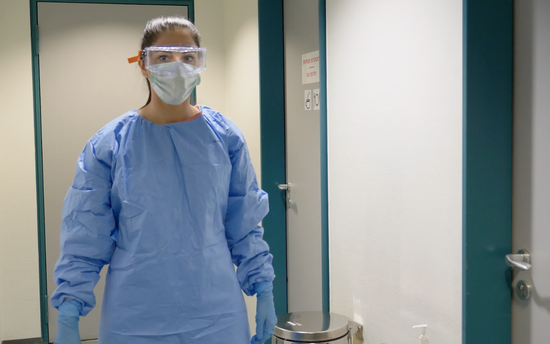
This is a guide for healthcare workers involved in patient care activities in a healthcare setting. It aims to show the type of personal protective equipment or PPE needed to correctly protect oneself. Based on the current available evidence, the WHO recommended PPE for the care of COVID patients are CONTACT and DROPLET precautions, with the exception of aerosol producing procedures, which require CONTACT and AIRBORNE (hence, a respirator mask such as N95, FFP2, FFP3). Keeping in mind, PPE is part of a larger infection prevention and control bundle of measures and should be implemented as part of a multimodal strategy of management of COVID-19 patients. Only clinical staff who are trained and competent in the use of PPE should be allowed to enter the patient’s room.
These materials were launched on 15/04/2020. As the scientific evidence and technical guidance regarding COVID-19 are constantly evolving, please refer to https://www.who.int/emergencies/diseases/novel-coronavirus-2019 for the latest updates.
Language: English
COVID-19
Course information
This course is also available in the following languages:
العربية - македонски - 中文 - Shqip - français - ภาษาไทย - Português - Español - Nederlands - Tetun - Русский - Soomaaliga - Türk- සිංහල- தமிழ் - Казақ тілі
Overview: This is a guide for healthcare workers involved in patient care activities in a healthcare setting. It aims to show the type of personal protective equipment or PPE needed to correctly protect oneself. Based on the current available evidence, the WHO recommended PPE for the care of COVID patients are CONTACT and DROPLET precautions, with the exception of aerosol producing procedures, which require CONTACT and AIRBORNE (hence, a respirator mask such as N95, FFP2, FFP3). Keeping in mind, PPE is part of a larger infection prevention and control bundle of measures and should be implemented as part of a multimodal strategy of management of COVID-19 patients. Only clinical staff who are trained and competent in the use of PPE should be allowed to enter the patient’s room.
Learning objectives: By the end of this course, participants should be able to:
- demonstrate the correct way to put on and remove PPE; and
- demonstrate the correct way to perform hand hygiene with an alcohol-based hand rub (ABHR), according to the WHO-recommended method.
Course duration: Approximately 15 minutes.
Certificate: A Confirmation of Participation is available to participants who complete 100% of the course material.
After completing this course, should you be interested in learning more about other aspects of infection prevention and control (IPC) in the context of COVID-19 please refer to the OpenWHO IPC course series:
- IPC courses in English: https://openwho.org/courses?lang=en&q=IPC
- IPC courses in all available languages: https://openwho.org/courses?q=IPC
Course contents
Module 1: How-to-guide for putting on and removing PPE according to droplet/contact precautions for COVID-19:
This module offers a video how-to-guide on putting on and removing PPE according to droplet/contact precautions for COVID-19, as well as two poster resources. By the end of this module, participants should be able to demonstrate the correct way to put on personal protective equipment according to the WHO-recommended method for COVID-19 droplet/contact precautions.Module 2: How-to-guide for putting on and removing PPE according to airborne/contact precautions for COVID-19 aerosol generating procedures:
This module offers a video how-to-guide on putting on and removing PPE according to airborne/contact precautions for COVID-19. By the end of this module, participants should be able to demonstrate the correct way to put on personal protective equipment according to the WHO-recommended method for COVID-19 airborne/contact precautions.
Enroll me for this course
Certificate Requirements
- Gain a Confirmation of Participation by completing at least 100% of the course material.